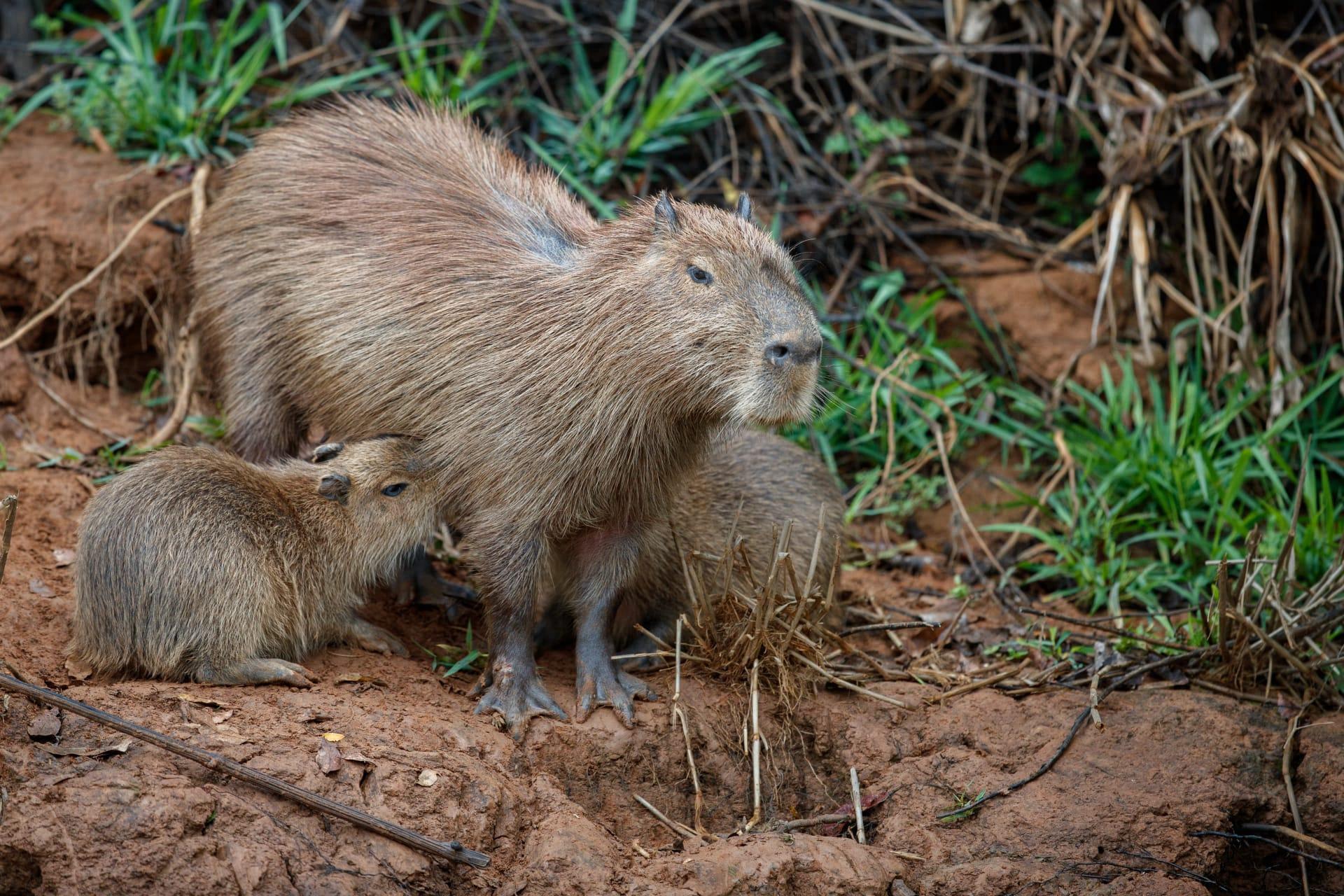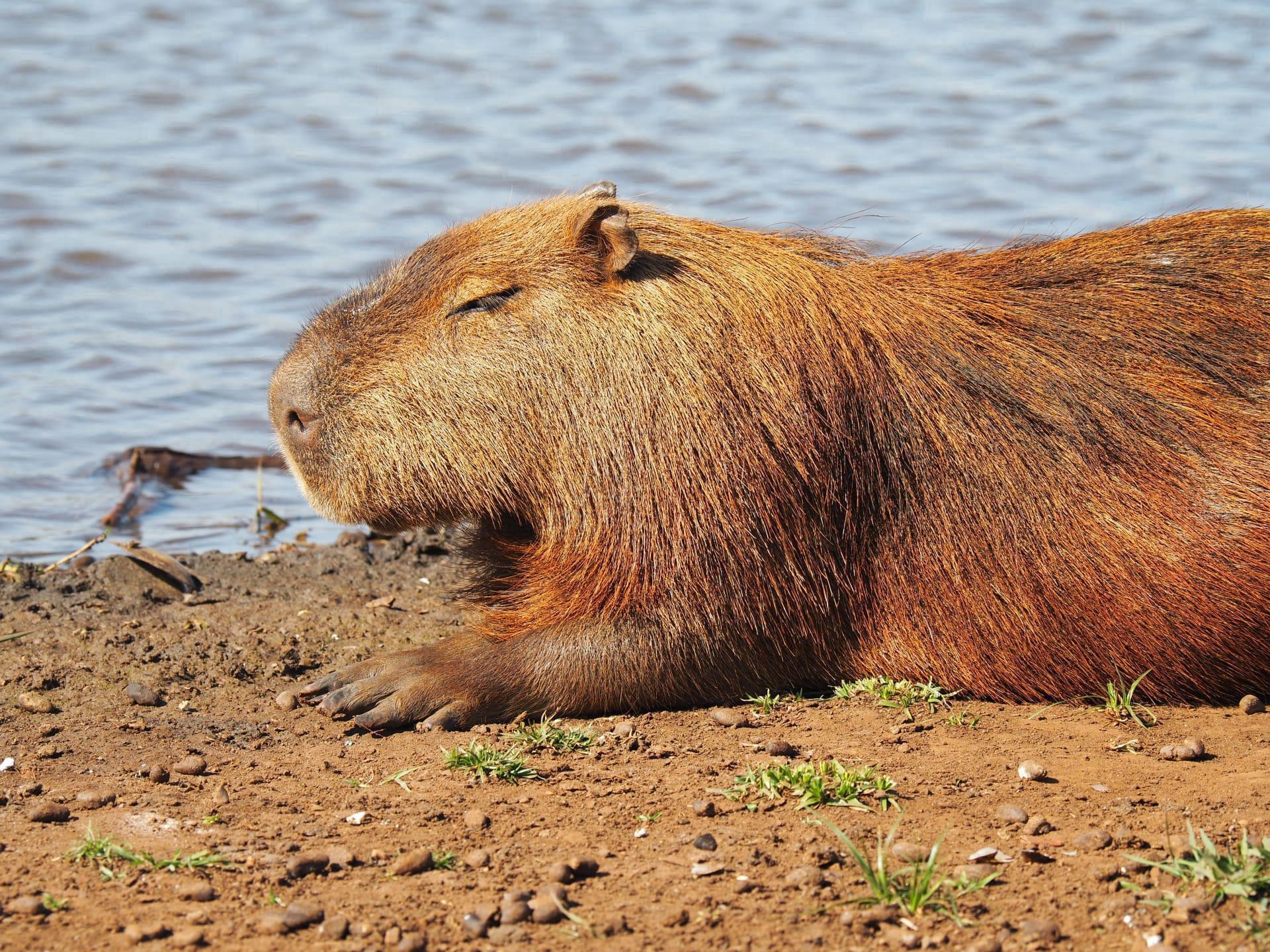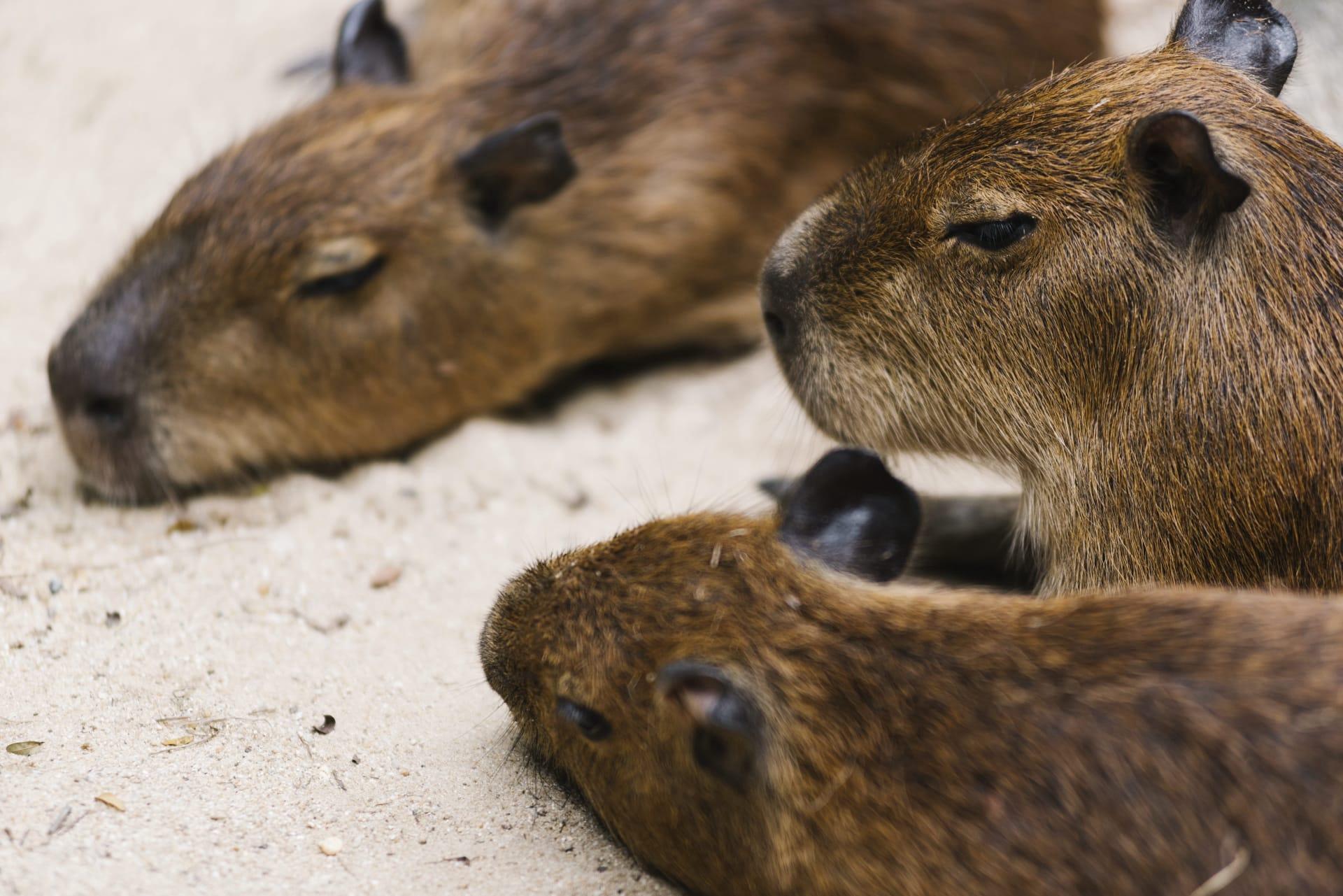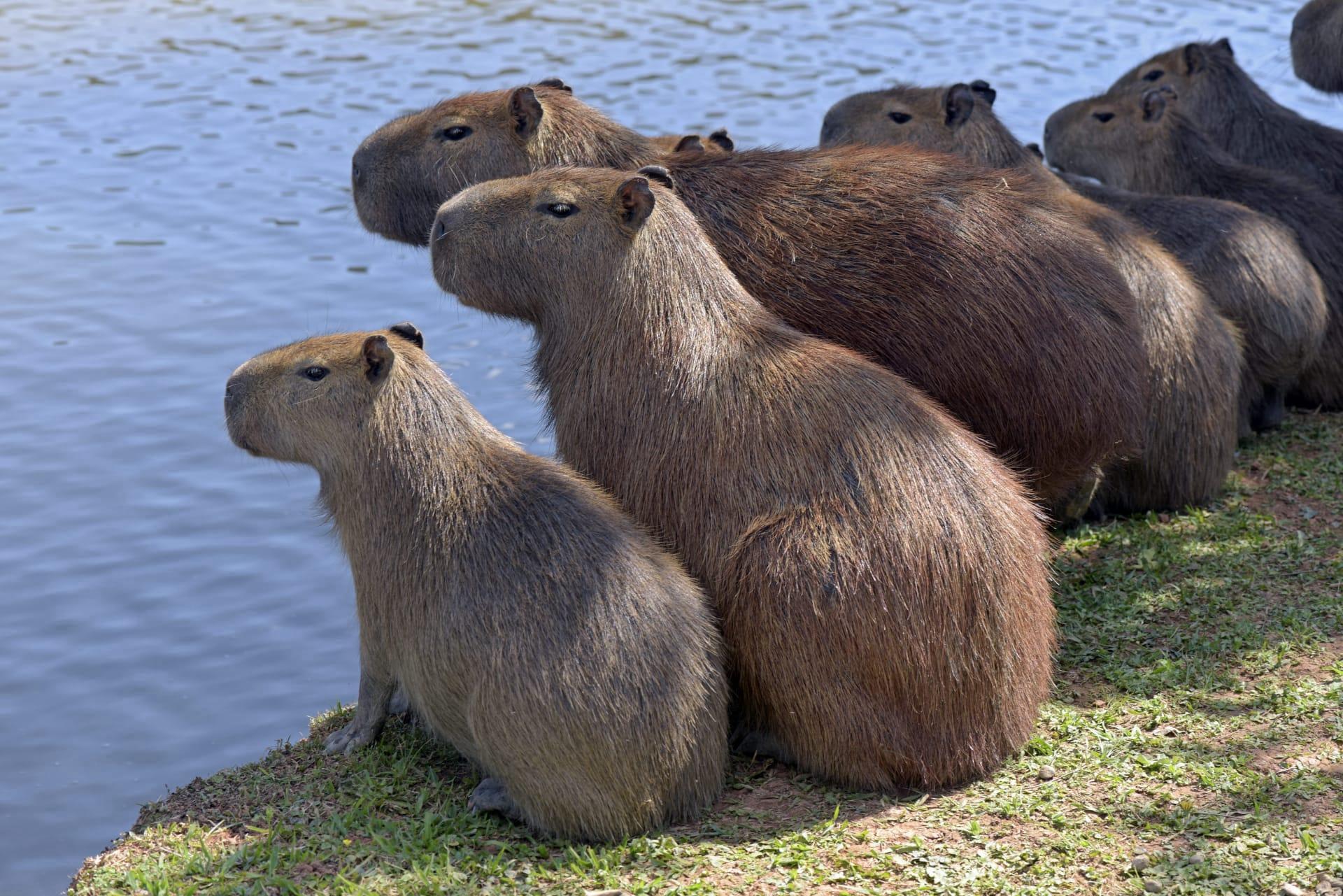Capybara Trivia
- Home /
- Trivia Question /
- Animal /
- Capybara Trivia
1
Question: How large can a capybara grow, and what's their average weight?
Answer: Capybaras are the world's largest rodents, reaching up to 4.3 feet (130 cm) in length and 2 feet (60 cm) in height at the shoulder. They typically weigh between 77 to 146 pounds (35 to 66 kg), with some males reaching up to 174 pounds (79 kg). These hefty sizes are complemented by their webbed feet and sturdy bodies, making them excellent swimmers.
Question: What is the lifespan of a capybara in the wild versus in captivity?
Answer: In the wild, capybaras live around 8 to 10 years. This lifespan is shorter due to threats like predators and environmental factors. In contrast, in captivity, with proper care and absence of natural predators, they can live up to 12 years, sometimes even reaching 15 years, showcasing the impact of a controlled environment on their longevity.

2
Question: Do capybaras have a complex social structure?
Answer: Contrary to some beliefs, capybaras are highly social and have a complex herd structure. They live in groups of around 10 to 20 individuals, sometimes forming groups of up to 100. These groups are typically dominated by a single male, with a clear hierarchy among both males and females, reflecting their social complexity.
Question: Is it true that capybaras are completely herbivorous?
Answer: Yes, capybaras are strictly herbivorous. They primarily feed on grasses and aquatic plants. Their diet can include up to 80 different species of plants, demonstrating their adaptability in various habitats. They also practice coprophagy, consuming their own feces to extract maximum nutrients from their food, a fact often unknown or misunderstood.

3
Question: How do capybaras adapt to their aquatic environment?
Answer: Capybaras are superbly adapted to aquatic life. They have webbed feet for swimming and can stay submerged for up to five minutes to evade predators. Their eyes, ears, and nostrils are positioned high on their heads, enabling them to breathe and stay alert while the rest of their body is underwater.
Question: Are capybaras friendly towards other animal species?
Answer: Capybaras are known for their docile nature and often exhibit friendly behaviors towards various other species, including birds, monkeys, and even domestic animals. This amiability is attributed to their social nature and non-aggressive demeanor, making them one of the most sociable and tolerant animals in the wild.

4
Question: What role do capybaras play in their ecosystem?
Answer: Capybaras play a crucial role in their ecosystem. As grazers, they help maintain the health of grasslands and wetlands. They also serve as a key food source for predators like jaguars and anacondas. Their grazing habits can influence the distribution of plant species, thus shaping the habitat they live in.
Question: Can capybaras regulate their body temperature, and how?
Answer: Yes, capybaras can regulate their body temperature through a unique behavior called thermoregulation. They spend a significant amount of time in water to keep cool in the heat. They also have sparse fur and sweat glands spread across their skin, which aid in heat dissipation, crucial for survival in their warm, humid habitats.

5
Question: How do capybaras communicate with each other?
Answer: Capybaras communicate through a combination of vocalizations, scent markings, and body language. They make various sounds like barks, whistles, and purrs to convey different messages. Scent glands on their faces are used for marking territory and signaling social status. These communication methods are vital for maintaining their complex social structures.
Question: What are the primary threats to capybara populations in the wild?
Answer: The primary threats to capybaras in the wild include habitat loss due to agricultural expansion and deforestation. They are also hunted for their meat and hide, particularly in South America. Despite these threats, capybaras are not currently listed as endangered, but ongoing environmental changes continue to pose challenges to their population.